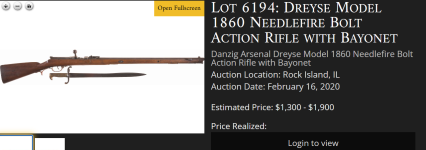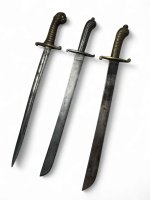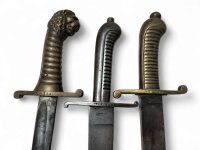Teku
Active member
I got this from an auction thinking it was cool and would go nicely on the wall with my 1871
but looking at it in person as opposed to the 2 photos of it, I am not so sure if this is a bayonet that was converted, was always like this as a dress piece or if its a knockoff.
*The images on my phone are a bit to big, so here's an imgur link instead*
but looking at it in person as opposed to the 2 photos of it, I am not so sure if this is a bayonet that was converted, was always like this as a dress piece or if its a knockoff.
*The images on my phone are a bit to big, so here's an imgur link instead*




